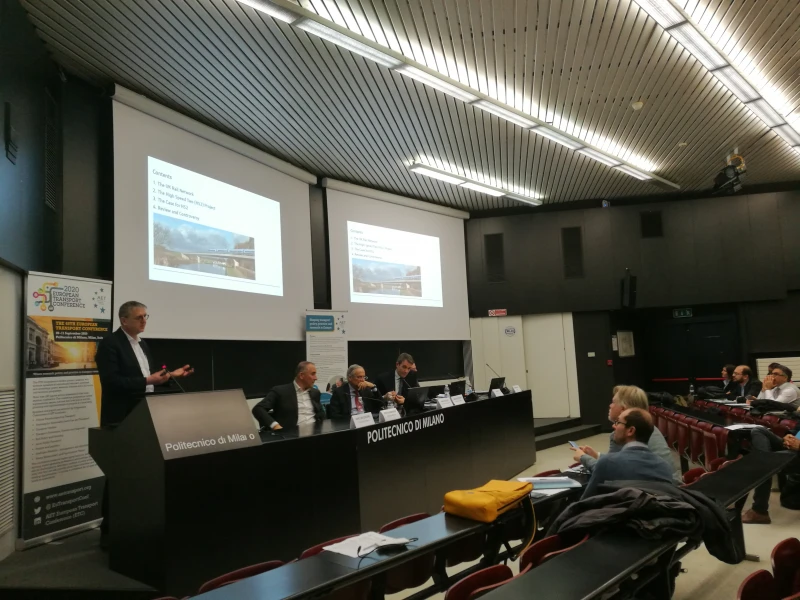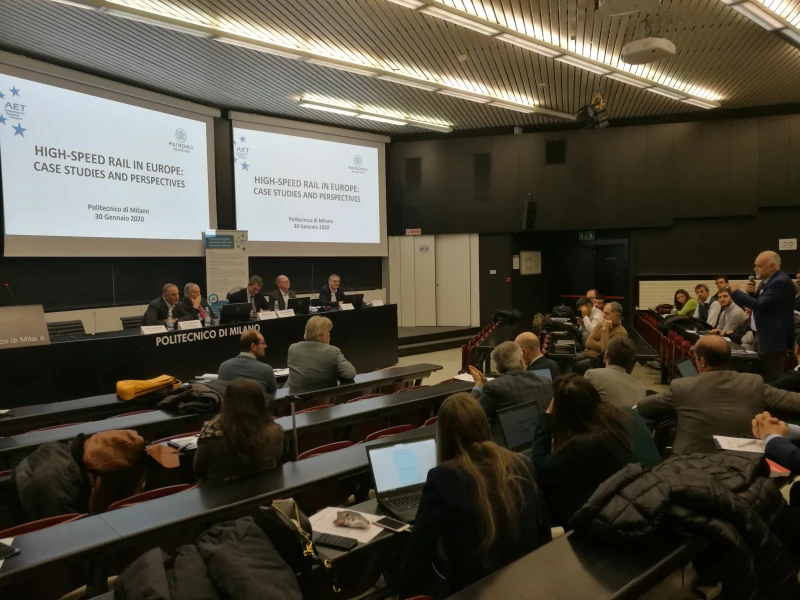-
Past ETC Papers

Browse, search and view papers from the past AET Conferences.
-
Members' Area

AET promotes networking and exchange of ideas, information and opportunities amongst members.
Conference Papers 2018
Dublin, Ireland
ETC Conference Papers 2018
Explaining the development of use of public transport in the Netherlands from 2005-2016
Seminar
Day 2 (11 Oct 2018), Session 4, Promoting Rail Travel: understanding the drivers, 09:00 - 10:30
Status
Accepted, documents submitted
Submitted by / Abstract owner
Han van der Loop
Authors
Han van der Loop, Peter Bakker, Fons Savelberg
(all from KiM Netherlands Institute for Transport Policy Analysis)
Marco Kouwenhoven and Eveline Helder (both Significance).
Short abstract
To explain the development of the use of public transport from 2005-2016 in the Netherlands in a detailed way, KiM developed a new method, using the Dutch National Model System (LMS). The paper will describe this method and the results.
Abstract
Objective
Until 2016, the KiM Netherlands Institute for Transport Policy Analysis annually explained the development of train passenger kilometres over the preceding ten years by using the national development of its drivers (such as population growth and train kilometers), as well as the elasticities of demand for those drivers. However, since 2014 this method has appeared to be less appropriate for completely explaining the increase in train patronage (+24% from 2005 to 2016). To acquire a complete as possible explanation of patronage development, KiM developed a more thorough method, using the Ministry of Infrastructure and Water Management’s National Model System (LMS), in cooperation with experts of public transport and of LMS. The paper will describe this method and the results. The LMS is a forecasting system for simulating developments in mobility, as based on a spatiotemporal detailed model of the drivers of mobility. KiM regards the application of this forecasting system for an ex-post evaluation as innovative.
Method
The LMS generates OD matrices between origin and destination zones for cars, public transport and bicycles (trips and kilometers) on an average working day. The output depends on a number of influencing factors such as population, employment, income, car ownership, road congestion, and the public transport service levels and pricing. To explain the development of public transport use from 2005 to 2016, models runs were made of 2004, 2010 and 2014, because much input data were already available for those years. To assess the impact of each influencing factor, we compared a model run with another model run in which only that particular influencing factor changed, while all other factors remained constant. We extrapolated the results to the period 2005-2016, based on empirical national data.
Results
Based on LMS analyses, we concluded that the 24% increase in train patronage during the period 2005-2016 was mainly determined by population growth (+5%), train passenger kilometres by students travelling with a student pass card (+4%) and improvements in level of service (+10%). Improvements in level of service consisted of higher frequencies, new rail lines, and better connections between train services. The increase in jobs, income, air traffic, road congestion and fuel price appeared to have small effects. The increase of train fares caused a decreasing impact on train passenger kilometers (-5%). The LMS analyses left a growth of 8% of train passenger kilometers unexplained. Other data and analyses demonstrated that this 8% increase in train passenger kilometres can be the result of a larger impact of the increase in the amount of students (about +1%), improved punctuality (about +1%), and a considerably smaller impact of price changes than the estimated -5%, because not all discount offers can be regarded as included in the LMS analyses.
Conclusions
LMS analyses explained the development of train passenger kilometers 2005-2016 better than the previous method, based on national developments of influencing factors and elasticities. The cause of the unexplained differences between the monitored developments of public transport use and the explanations based on LMS analyses can be: an insufficient degree of detail of data on patronage and on the level of service of public transport available for research, as well as insufficient representations in LMS analyses of socioeconomic factors, of pricing and of level of service.
Programme committee
Transport Models
Documents:

Association For
European Transport
Forester House
Doctors Lane
Henley-in-Arden
Warwickshire, UK
B95 5AW
+44 (0) 15 64 793552
VAT number: 710 1866 64
Conference Supporters & Endorsers




Legal Entity
The Association for European Transport is registered as an Association ('vereniging') with the Chamber of Commerce for Haaglanden in The Netherlands under company number 27170096.
Built on Zenario




